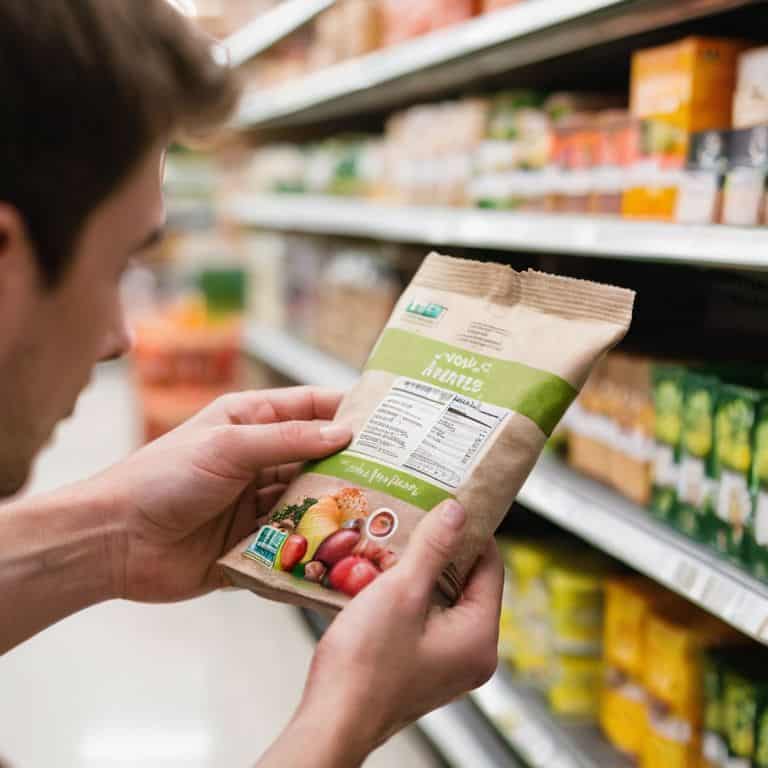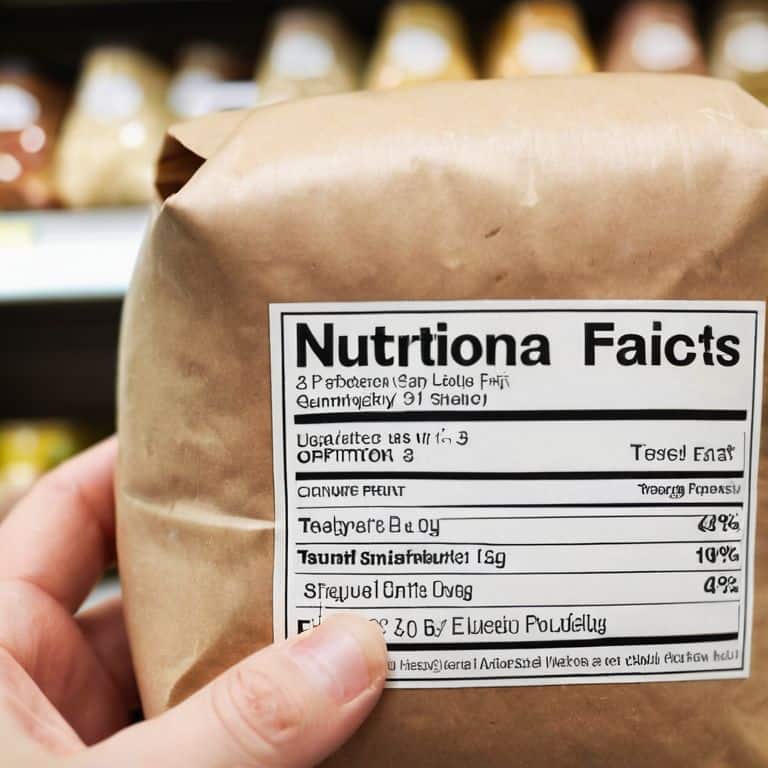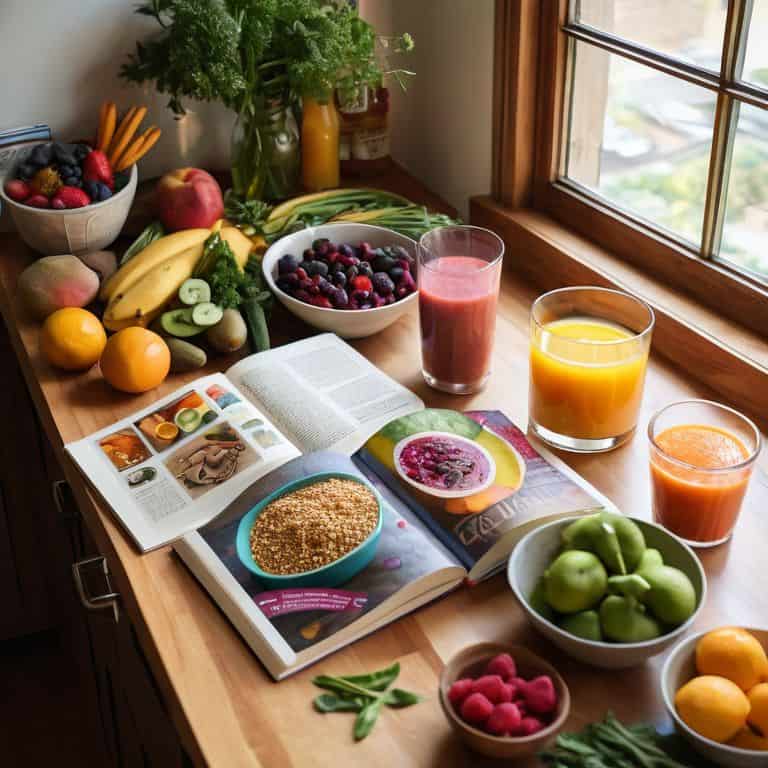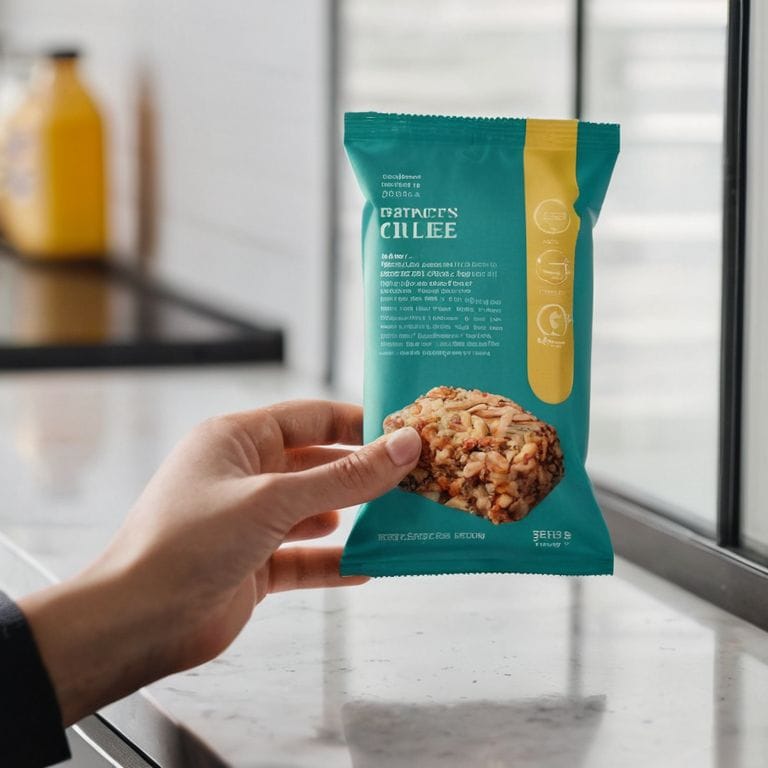I still remember the frustration I felt as a clinical dietitian, watching my patients struggle to make sense of the misleading health claims on packaging. It seemed like every food product was touting itself as a “superfood” or a “miracle cure,” leaving people confused and unsure of what to believe. I realized that the key to making informed decisions wasn’t about following the latest trends or restrictions, but about learning how to spot misleading health claims on packaging and focusing on whole, nutrient-dense foods instead.
As someone who’s passionate about healthy eating, I want to empower you with the knowledge and skills to navigate the grocery store with confidence. In this article, I’ll share my top tips for spotting sneaky labels and finding joy in what you eat. I’ll cut through the hype and provide you with experience-based advice on how to spot misleading health claims on packaging, so you can make choices that nourish your body and satisfy your cravings. My goal is to help you develop a healthier relationship with food, one that’s focused on adding nutrients, not just removing calories. Let’s get started on this journey together, and discover a way of eating that’s both delicious and nutritious.
Table of Contents
Dont Get Fooled Spot Misleading Claims

When I’m browsing the aisles at my local farmers’ market or grocery store, I always keep an eye out for sneaky labels that promise the world but don’t quite deliver. It’s amazing how many products claim to be “healthy” or “natural” when, in reality, they’re packed with preservatives and additives. To avoid getting fooled, it’s essential to develop your food label literacy skills. This means taking a closer look at the ingredient list and nutrition facts, rather than just relying on the marketing claims on the front of the package.
As a nutritionist, I’ve seen my fair share of common deceptive marketing tactics. One of the most prevalent is the use of buzzwords like “low-fat” or “sugar-free” to make a product sound healthier than it actually is. But what about the ingredients that are being used to replace the fat or sugar? Are they nutritionally sound, or are they just a clever substitute? By understanding nutrition claim regulations, you can make more informed decisions about the products you choose to put in your body.
To make healthy choices, it’s crucial to look beyond the packaging and recognize biased health research. This means being aware of the sources that are funding the research and whether they have a vested interest in the outcome. By taking a more nuanced approach to understanding food labels, you can start to make choices that truly nourish your body, rather than just following the latest trends or marketing claims.
Decoding Food Labels With Joy
When I’m browsing the aisles, I love to play a game of label detective. It’s amazing how a few simple words can make or break a product’s health claims. To truly decode these labels, we need to look beyond the flashy packaging and focus on the ingredients and nutritional information.
By doing so, we can uncover the real story behind the product and make informed choices that bring us joy in our eating experience. I believe that’s where the magic happens, and healthy eating becomes a sustainable, long-term journey rather than a chore.
Uncovering Deceptive Marketing Tactics
As I wander through the aisles of my local grocery store, I’m always on the lookout for sneaky marketing tactics that try to disguise unhealthy foods as wholesome options. It’s amazing how a few cleverly chosen words can make a product sound like a superfood, when in reality it’s just a highly processed snack.
I’ve learned to read between the lines and look beyond the flashy labels to uncover the truth about what I’m really putting in my body. By doing so, I’ve discovered that even some of my favorite foods have been masquerading as healthier options than they actually are.
How to Spot Misleading Health Claims

To develop a keen eye for spotting misleading health claims, it’s essential to understand the basics of understanding food labels. This means becoming familiar with the terminology and regulations surrounding nutrition claims. By doing so, you’ll be better equipped to distinguish between genuine health benefits and clever marketing ploys. For instance, phrases like “all-natural” or “low-fat” can be misleading if not properly contextualized.
When examining food labels, it’s crucial to be aware of common deceptive marketing tactics. These can include exaggerated health claims, misleading ingredient lists, or omitted information about potential allergens. Staying informed about nutrition claim regulations can help you make more discerning choices. Additionally, recognizing the signs of biased health research can prevent you from being swayed by unsubstantiated claims.
By cultivating food label literacy, you’ll become more adept at navigating the often-confusing world of food packaging. This involves being mindful of healthy packaging design trends that may prioritize visual appeal over transparency. As you develop your skills, you’ll find it easier to identify genuine health benefits and make choices that align with your values, ultimately allowing you to enjoy your favorite foods with greater confidence and joy.
Nutrition Claim Regulations Explained
When it comes to nutrition claim regulations, it’s essential to understand the framework that governs these labels. In the United States, the FDA and USDA oversee the labeling of food products, ensuring that claims are accurate and not misleading.
To make informed decisions, look for third-party certifications that verify the nutritional content of a product. These certifications can provide an added layer of assurance that the product meets certain standards, helping you navigate the complex world of food labeling with confidence.
Recognizing Biased Health Research Easily
As a nutritionist, I’ve learned to scrutinize studies that seem too good (or bad) to be true. It’s essential to recognize biased health research to make informed decisions about your diet. When reading about a new study, look for red flags like small sample sizes or short durations.
To separate fact from fiction, consider the funding sources and potential conflicts of interest. Ask yourself if the study’s findings are being exaggerated or taken out of context. By being a critical consumer of health research, you can make more informed choices and find joy in nourishing your body with whole, delicious foods.
My Top 5 Tips to Spot Misleading Health Claims with Ease
- Check the ingredient list: if it’s packed with unrecognizable words, it’s likely more processed than you think, and those ‘health’ claims might be hiding something
- Be wary of buzzwords: terms like ‘natural’, ‘low-fat’, or ‘sugar-free’ don’t always mean what you think they do – look for concrete nutritional information instead
- Don’t fall for the ‘health halo’ effect: just because a product is marketed as healthy doesn’t mean it’s nutritious – consider the overall nutritional profile, not just one or two beneficial ingredients
- Watch out for misleading serving sizes: manufacturers often use tiny serving sizes to make their products appear healthier than they are – make sure you’re looking at the nutrition facts for a serving size that matches your actual consumption
- Look for third-party certifications: labels like the USDA Organic or Non-GMO Project seals can give you more confidence in the product’s ingredients and production process, but always check the fine print and don’t rely solely on these certifications to make your decision
Key Takeaways to Nourish Your Body and Soul
Focus on adding nutrients, not just removing calories, and prioritize whole, unprocessed foods to make informed choices
Learn to decode food labels with joy, recognizing that even healthy foods can be marketed with misleading claims, and stay informed about nutrition claim regulations
Empower yourself to spot biased health research and deceptive marketing tactics, and remember that the healthiest ingredient is joy – so choose foods that nourish your body and honor your cravings
Wisdom to Savor
The most powerful tool to spot misleading health claims on packaging isn’t a dictionary of nutrition jargon, but your own intuition – trust your gut, read between the lines, and remember, if it sounds too good to be true, it probably is!
Laura Paskal
Empowered Eating: Taking Control of Your Nutrition

As we’ve navigated the world of food packaging and health claims, I hope you’ve gained a deeper understanding of how to spot misleading labels and make informed choices. From decoding food labels to recognizing biased health research, it’s all about being aware of the tactics used to influence our purchasing decisions. By focusing on adding nutrients rather than just removing calories, we can cultivate a healthier relationship with food and our bodies. Remember, the healthiest ingredient is joy, and it’s time to start enjoying the process of nourishing our bodies.
As you move forward, I encourage you to approach food with a sense of curiosity and wonder. Don’t be afraid to try new things, explore different flavors, and find healthy versions of your favorite comfort foods. By doing so, you’ll not only nourish your body but also nourish your soul. Let’s break free from the restrictive mindset and embrace a world where healthy and delicious are no longer mutually exclusive. Together, let’s make healthy eating a joyful and sustainable part of our lives.
Frequently Asked Questions
What are some common red flags to look out for when reading food labels to avoid misleading health claims?
When reading food labels, I always look out for buzzwords like ‘natural’ or ‘low-fat’ that don’t necessarily mean what you think. Also, be wary of exaggerated health claims or fancy packaging that distracts from the actual ingredients. Let’s get real, if it sounds too good to be true, it probably is!
How can I differentiate between genuine health benefits and clever marketing on packaging?
To differentiate between genuine health benefits and clever marketing, look beyond the flashy labels and focus on the nutrition facts panel. Check for specific, scientifically-backed claims and be wary of vague terms like ‘natural’ or ‘wholesome’. Let your taste buds and body be the judge, not just the packaging!
Are there any specific regulations or certifications I should look for to ensure the health claims on food packaging are trustworthy?
When it comes to trustworthy health claims, I always look for third-party certifications like the USDA Organic seal or the Non-GMO Project Verified label. These organizations have strict standards, so you can feel confident in your choices. Additionally, check for FDA-compliant language and be wary of vague terms like “all-natural” – it’s all about being a savvy shopper!
